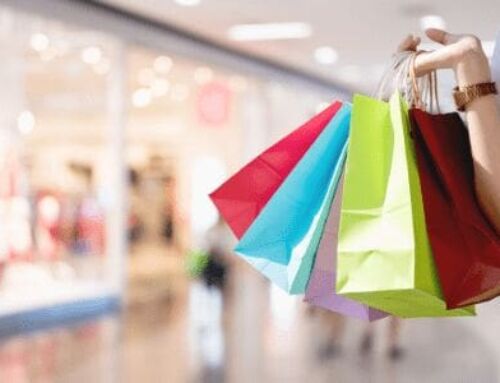Author
Tommy Chapman
Share
The Rise of Contactless Card Payments
Contactless payment has now been around in the UK for several years, first being introduced by Barclaycard in 2008 and 5 years later there were approximately 32.5 million contactless enabled cards in the UK and over 147,000 terminals in use. Initially this technology was in the background of payment methods in retail but now in 2015 it is rising to become a mainstream part of retail payment methods with 51% of all contactless payments being made in the retail sector.
Contactless for retail is maturing and fast becoming a very popular payment method within the UK. The most appealing reason for retailers to implement contactless payments is that it enables quick and convenient transactions.
One of the most understandable reasons for the increased importance of contactless payments is that in February 2015 the UK Cards Association announced that they would raise the spending limit from £20 to £30 by September 2015. A leading factor for this was that studies show the average-spend on supermarket groceries is around £25. Does your business take a lot of payments under £30?
And there are now an incredible 58 million contactless cards in the UK that were used to make 46.1 million contactless transactions in December 2014 alone. Contactless payment is available on debit, credit, charge and pre-paid cards. A contactless card has this symbol on it:
Any retailer considering implementing any new technology, such as contactless payments, needs to ask how it will benefit their customers. In the eyes of the consumer, contactless is a fast, easy and secure way to pay by card for purchases under £20 (rising to £30) without having to enter their pin. 71% of customers think contactless is easier than Chip and PIN. Additionally there is a growing trend to enable smart phones to act as a contactless payment method. Total contactless transactions have more than tripled from £652million in 2013 to £2.32billion last year, showing just how convenient the modern consumer finds this technology.
If it’s important to you to have happier customers, more people in your store and to get as many sales as possible (especially during peak times) then contactless is an option for your retail operation.
If you’re one of the following businesses then choosing contactless may well be the right option for you (for more information contact RMS):
Convenience stores Discount Stores Gift stores
Fashion and Clothing shops Department Stores Farm Shops
Arts and Crafts shops Public Sector and Colleges Delicatessens
Florists Newsagents Supermarkets
Cafes Bars Pubs
Fast Food restaurants Coffee shops Sandwich shops
Before considering contactless payments there are several things you need to consider first. There are four primary benefits for retailers who use contactless payment technology which include faster payment processing, increased revenue, cost reductions and improved customer relationships. Furthermore contactless Chip and PIN payments integrate seamlessly with Microsoft Dynamics RMS and OpSuite EPoS systems.
Firstly a key advantage for implementing contactless technology is the reduction in transaction times. For the majority of contactless transactions there is no verification, receipt or authorisation, and the average transaction time is less than a second. Do you want to reduce the length of queues at peak times?
Secondly this technology provides a brilliant opportunity for increased revenue. When consumers use any kind of card transaction they tend to spend more than when parting with cash. With contactless payments the average transaction value is not limited by the amount of cash they have in their pockets but instead the £20 (rising to £30) contactless limit. Without this constraint consumers are often tempted to spend a little extra. The result is both a reduction in the number of abandoned purchases and an increase in impulse purchases.
Reducing cost is often a key area retailer’s focus on when trying to optimise business and contactless payments can achieve this in a few ways. By taking less cash, cost reductions can be achieved through potentially lower insurance fees by having less cash on the retail premise as well as limiting the number of trips to the bank. Additionally, with contactless payments a receipt is only printed where a customer requests one therefore reducing time and paper costs in receipt production. Overall productivity is improved as more cardholders make contactless transactions with minimal staff intervention, allowing point-of-sale resource requirements to be reduced or reallocated.
The final and one of the most important aspects of any successful retail operation is how to improve customer relationships. Customers perceive retailers who use the latest technology as being innovative and professional, providing these retailers with a competitive advantage. The speed of transactions and convenience of the process improve customer satisfaction through the reduction of queuing time. As well a reduction in processing time allowing retail staff to pay more attention to the wants and needs of the customers. Do you want to make the till as quick and as efficient as possible for your customers?
Hopefully this article has offered some clarity on the rise of contactless payments in the UK and how the implementation of this technology can optimise modern retail businesses. If you feel contactless payments could be a fit for you then talk to us. Our dedicated team will be happy to assist with any queries.
Key Terms
Share:
Sign up now for news and special offers!
Join our Newsletter
*We are collecting your email information in order to add you to our newsletter recipient list. You can unsubscribe from our communications at any time. You can do this by contacting us or by clicking the unsubscribe button on any of our communications with you.
You can find more information about the details we hold about you and the way we use them in our privacy policy, and you can access this here or we can send you a copy.






